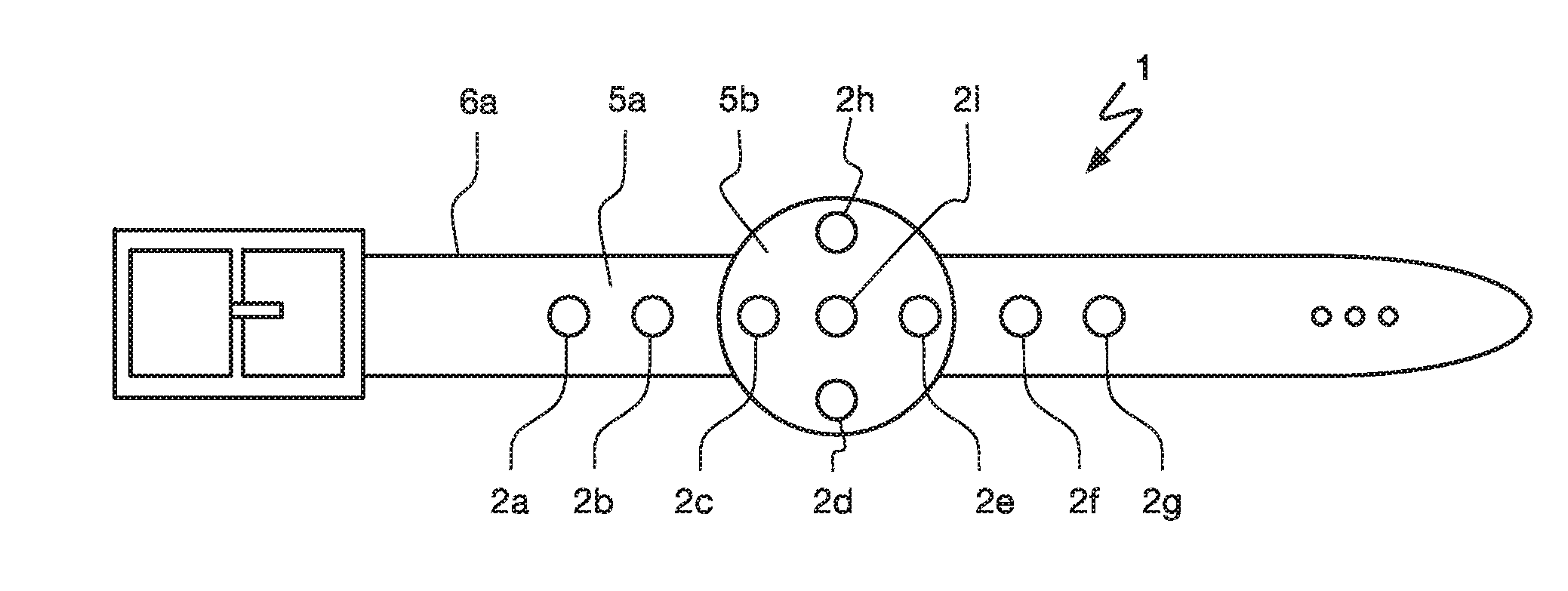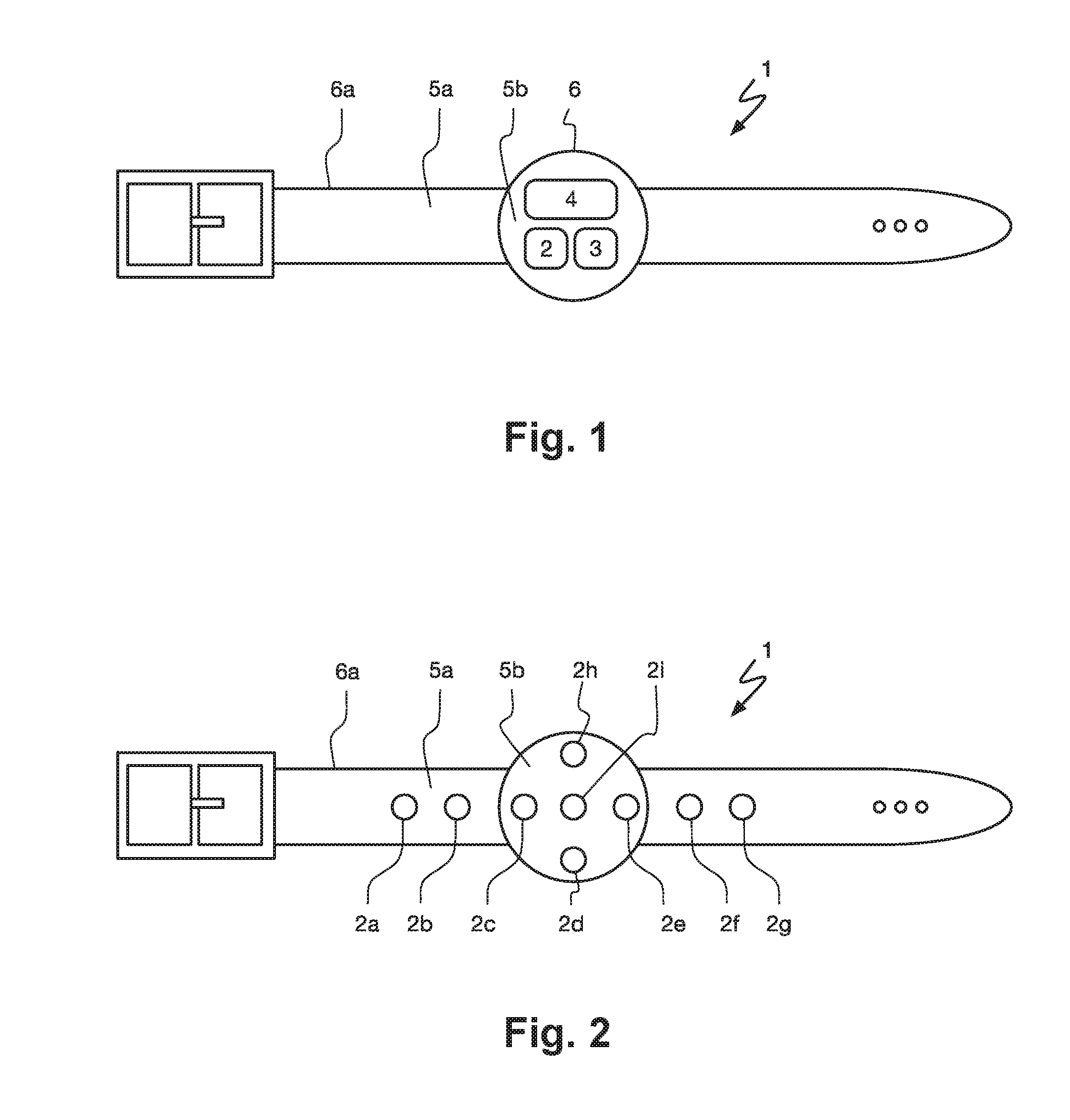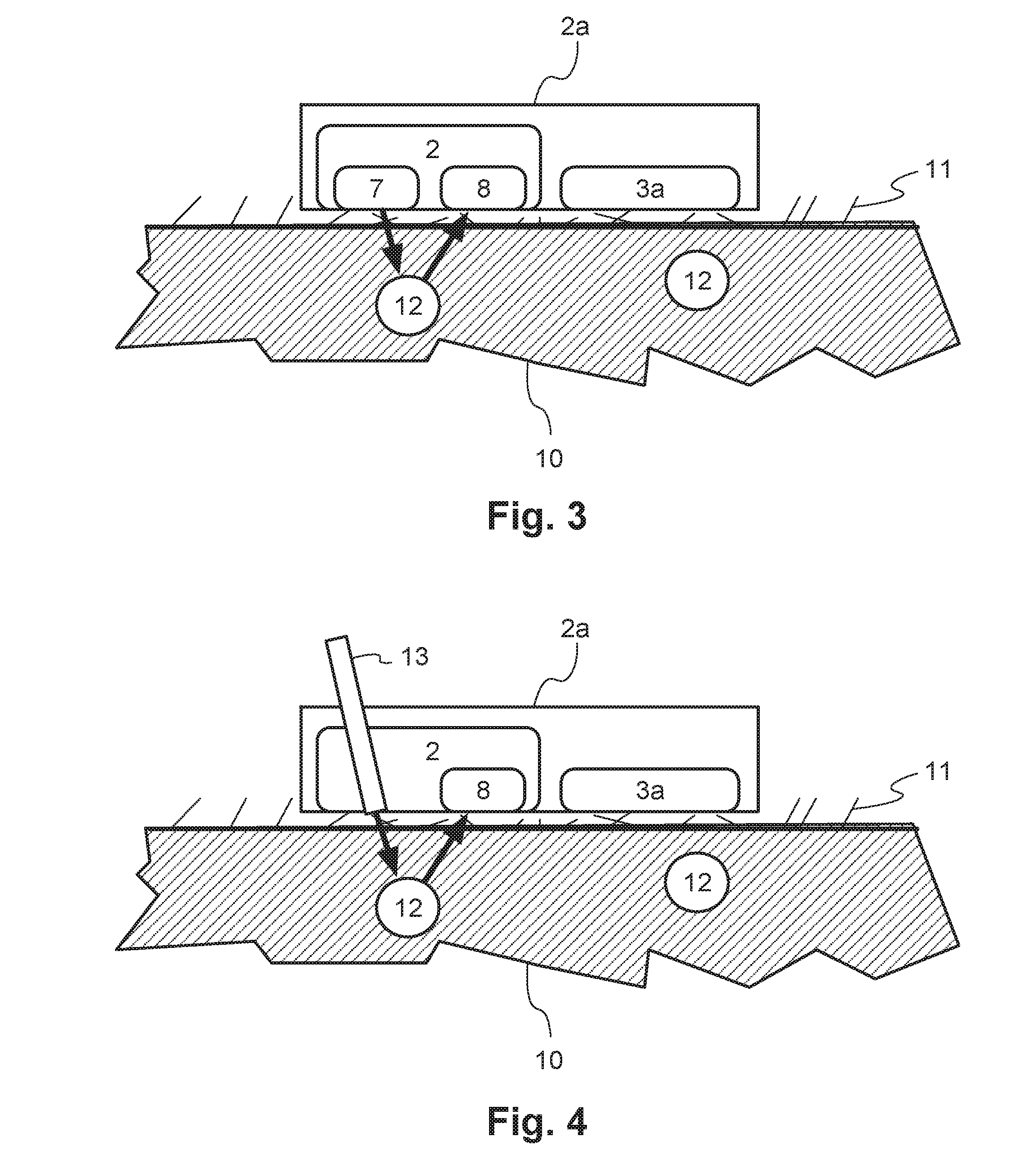Wearable biometric device and method of performing biometric measurements
a biometric device and wearable technology, applied in the field of wearable electronic devices, can solve the problems of reducing the acceptance of such devices by users, reducing the radiation power of one or more radiation sources, and being considered very inconvenient for the wearer of the device, so as to reduce the number of biometric sensors, reduce the radiation power of one or more radiation sources, and reduce the number of radiation sources
- Summary
- Abstract
- Description
- Claims
- Application Information
AI Technical Summary
Benefits of technology
Problems solved by technology
Method used
Image
Examples
Embodiment Construction
[0058]FIG. 1 illustrates a wearable biometric device 1 designed as a wrist worn watch, according to a preferred embodiment of the present invention. The device 1 is shown from its rear side and comprises a housing 6 connected to a bracelet 6a for fixing the watch to the wrist of a user. The surface portions of the device 1 that are designed to get in contact with the skin of the user's body, i.e. at the wrist, define a contact surface with a first contact portion 5a on the rear side of the bracelet 6a and a second contact surface portion 5b at the rear side of the housing 6.
[0059]The second contact surface portion 5b of the housing 6 comprises a biometric sensor system 2 and a detector system 3, which are arranged such that when the second contact surface portion 5b is brought into contact with the skin of the user, the biometric sensor system 2 also gets in contact with it, at least at one location, and is thus enabled to perform at the location measurements of one or more physiolo...
PUM
 Login to View More
Login to View More Abstract
Description
Claims
Application Information
 Login to View More
Login to View More - R&D
- Intellectual Property
- Life Sciences
- Materials
- Tech Scout
- Unparalleled Data Quality
- Higher Quality Content
- 60% Fewer Hallucinations
Browse by: Latest US Patents, China's latest patents, Technical Efficacy Thesaurus, Application Domain, Technology Topic, Popular Technical Reports.
© 2025 PatSnap. All rights reserved.Legal|Privacy policy|Modern Slavery Act Transparency Statement|Sitemap|About US| Contact US: help@patsnap.com



